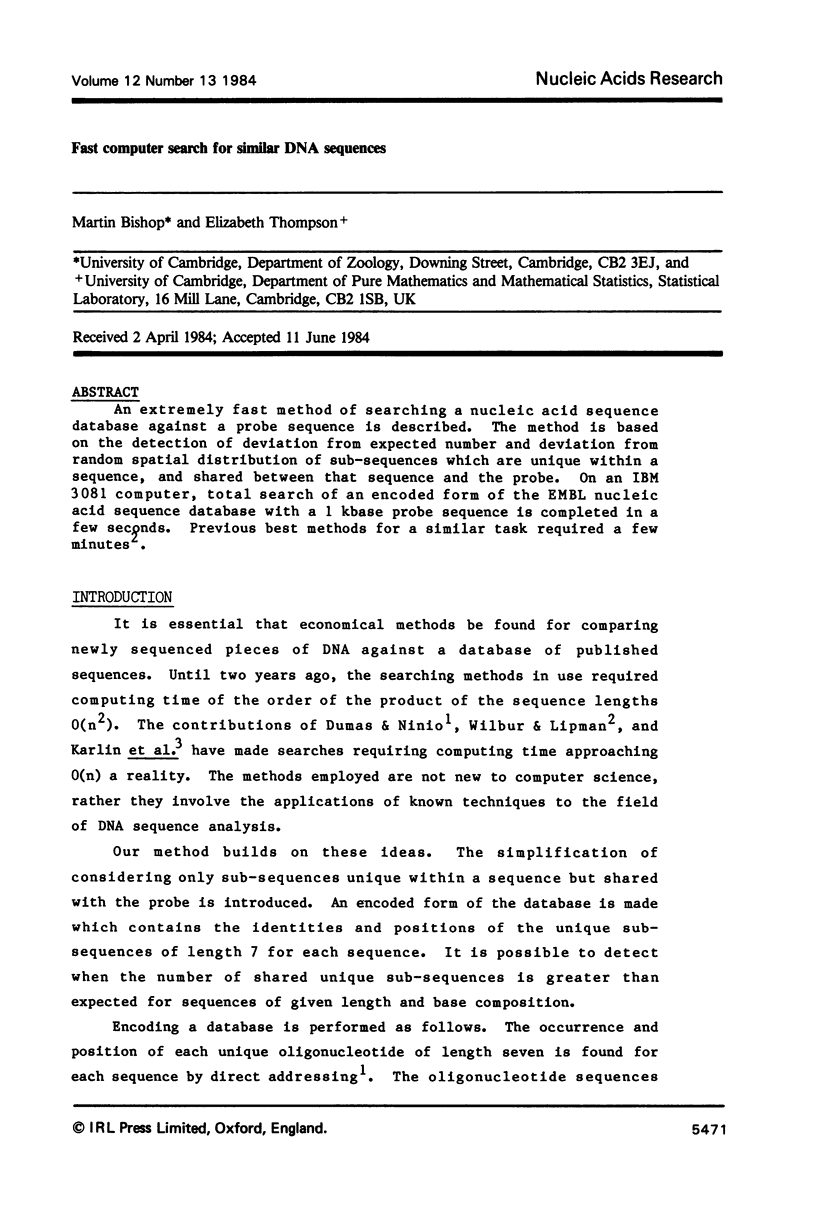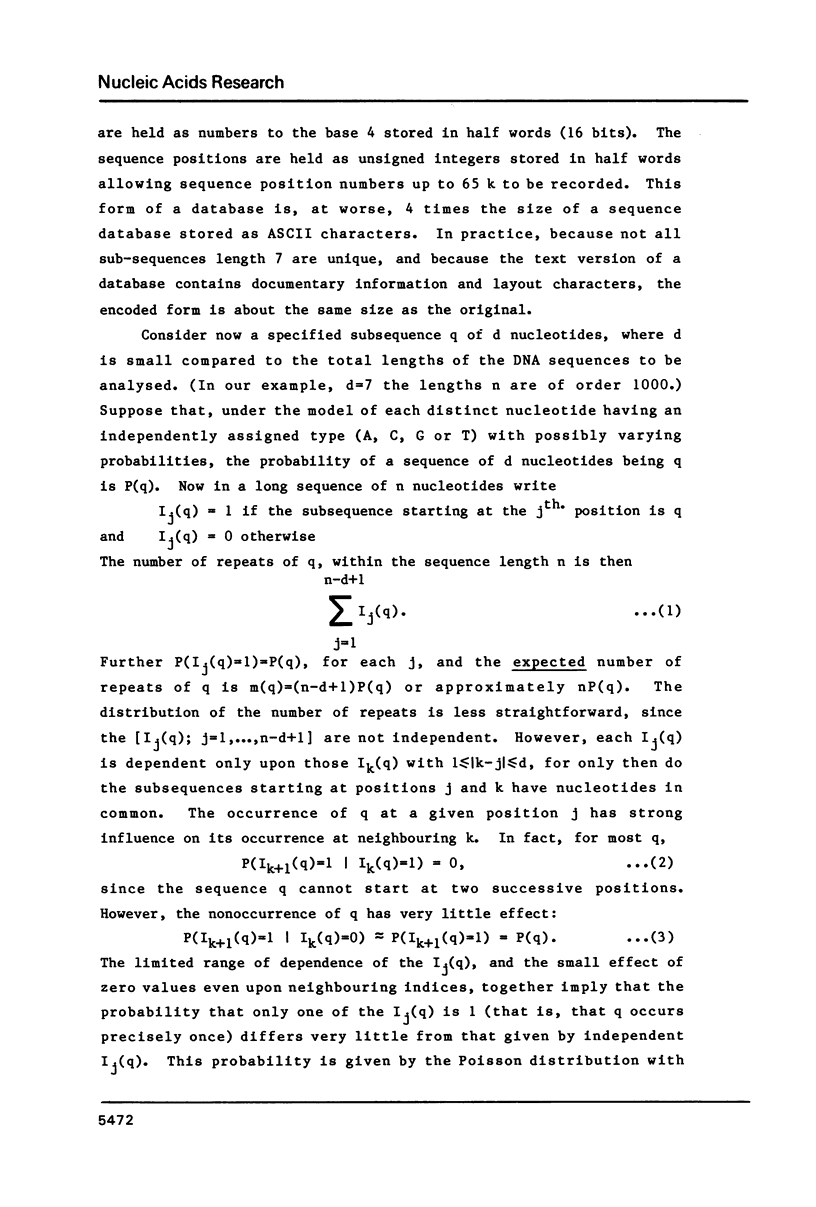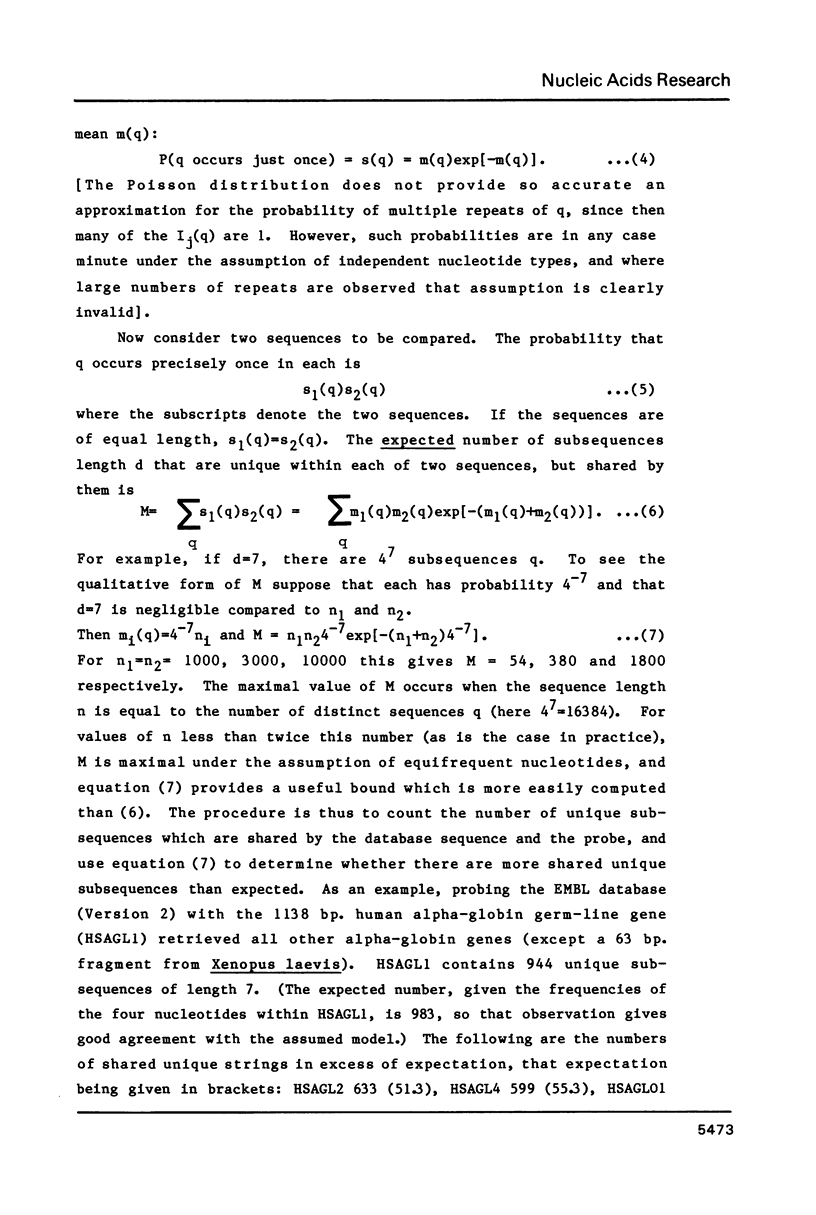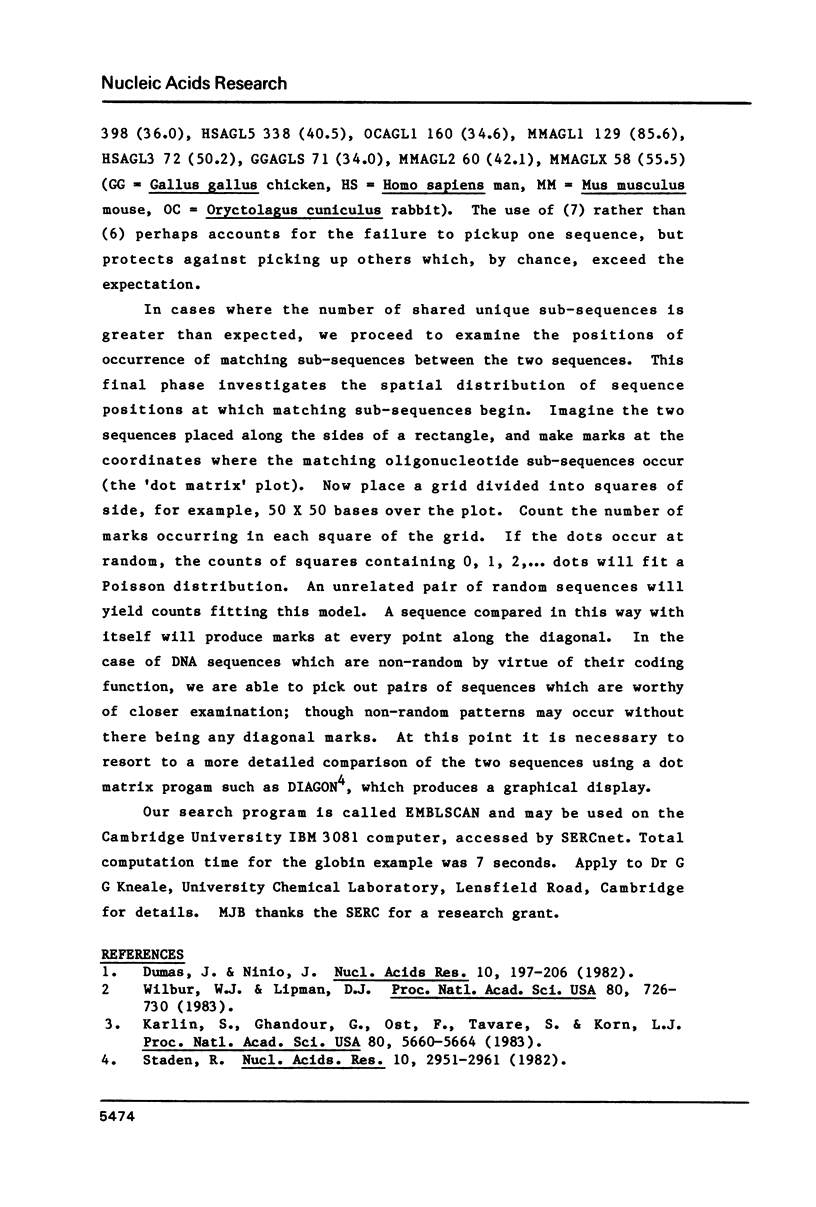Abstract
An extremely fast method of searching a nucleic acid sequence database against a probe sequence is described. The method is based on the detection of deviation from expected number and deviation from random spatial distribution of sub-sequences which are unique within a sequence, and shared between that sequence and the probe. On an IBM 3081 computer, total search of an encoded form of the EMBL nucleic acid sequence database with a 1 kbase probe sequence is completed in a few seconds. Previous best methods for a similar task required a few minutes.
Full text
PDF



Selected References
These references are in PubMed. This may not be the complete list of references from this article.
- Dumas J. P., Ninio J. Efficient algorithms for folding and comparing nucleic acid sequences. Nucleic Acids Res. 1982 Jan 11;10(1):197–206. doi: 10.1093/nar/10.1.197. [DOI] [PMC free article] [PubMed] [Google Scholar]
- Karlin S., Ghandour G., Ost F., Tavare S., Korn L. J. New approaches for computer analysis of nucleic acid sequences. Proc Natl Acad Sci U S A. 1983 Sep;80(18):5660–5664. doi: 10.1073/pnas.80.18.5660. [DOI] [PMC free article] [PubMed] [Google Scholar]
- Staden R. An interactive graphics program for comparing and aligning nucleic acid and amino acid sequences. Nucleic Acids Res. 1982 May 11;10(9):2951–2961. doi: 10.1093/nar/10.9.2951. [DOI] [PMC free article] [PubMed] [Google Scholar]
- Wilbur W. J., Lipman D. J. Rapid similarity searches of nucleic acid and protein data banks. Proc Natl Acad Sci U S A. 1983 Feb;80(3):726–730. doi: 10.1073/pnas.80.3.726. [DOI] [PMC free article] [PubMed] [Google Scholar]


